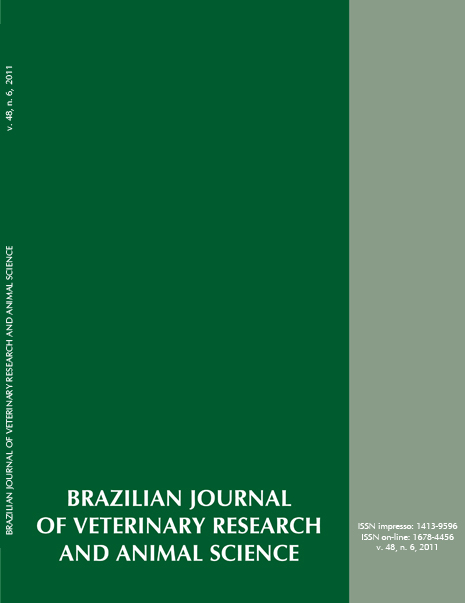A survey on equine neoplasias over a 15-year period in a veterinary hospital
DOI:
https://doi.org/10.11606/S1413-95962011000600001Keywords:
Neoplasia, Horse, Sarcoid, Melanoma, Squamous cells carcinomaAbstract
Although several prior studies have provided information regarding incidence of tumors in horses, there is a wide variation due to regional differences, such as climate and breed population. A number of 133 cases involving tumors was found among the 6669 equides submitted to the Veterinary Hospital (HOVET) of the School of Veterinary Medicine of the University of São Paulo, during a 15 years period, representing 2% of all records. The most commonly found neoplasm was the squamous cells carcinoma (45%), different from most of the studies worldwide. The most common neoplasia in the integument system was melanoma (34,2%) and in the ocular (76,9%) and urogenital systems (40,9%) was squamous cells carcinoma. Surgical intervention was recommended in 68% of the cases, while a clinical approach was chosen in 10% of them. Twenty two percent of the horses were not treated due to of the owner option or euthanasia indication. Death associated with tumors occurred on 14% of the animals during the hospitalization period or treatment. The squamous cell carcinoma occurs more often in our veterinary hospital and may be related to prolonged exposure to ultraviolet radiation, whose amount in the tropics has increased considerably in the last decades.Downloads
Download data is not yet available.
Downloads
Published
2011-12-01
Issue
Section
UNDEFINIED
License
The journal content is authorized under the Creative Commons BY-NC-SA license (summary of the license: https://
How to Cite
1.
Baccarin RYA, Silva LCLC da, Belli CB, Fernandes WR, Zoppa AL do VD. A survey on equine neoplasias over a 15-year period in a veterinary hospital. Braz. J. Vet. Res. Anim. Sci. [Internet]. 2011 Dec. 1 [cited 2024 Apr. 19];48(6):439-45. Available from: https://revistas.usp.br/bjvras/article/view/34350





